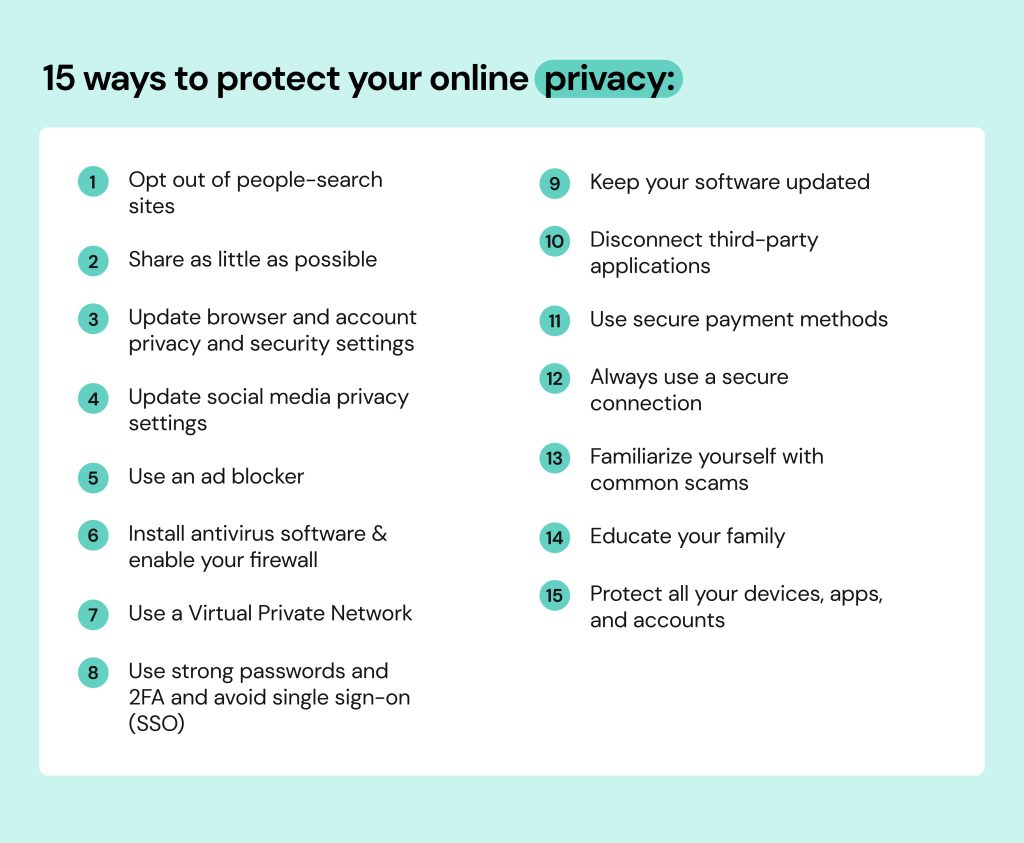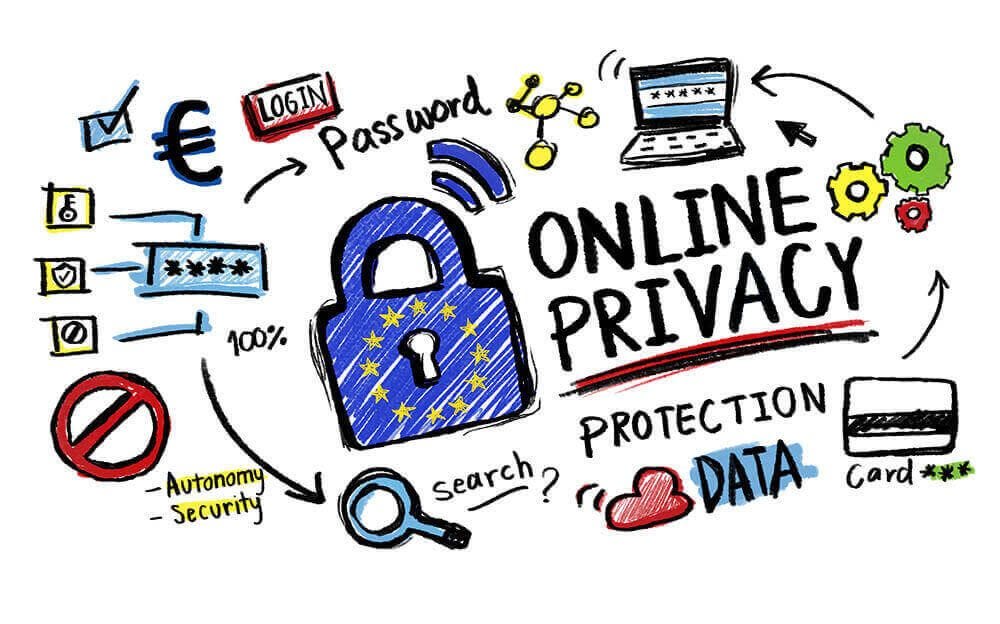Why Online Privacy Matters
Online privacy isn’t just a concern for tech-savvy individuals or businesses—it’s essential for everyone using the internet today. From your social media profiles to online banking, nearly every digital footprint you leave can be tracked, exploited, or stolen if not protected. Cyberattacks, identity theft, and data breaches have become increasingly common, and securing your online presence is no longer optional. It’s your digital defense against prying eyes and malicious intent.
Steps to Secure Your Online Privacy
- Use Strong Passwords
Avoid using predictable combinations like “123456” or “password.” Opt for complex passwords with a mix of letters, numbers, and symbols—and use a different one for every account. - Enable Two-Factor Authentication (2FA)
Add an extra layer of security to your accounts by enabling 2FA. Even if your password is compromised, your account remains safe. - Update Devices Regularly
Keep your software, apps, and devices up-to-date to patch vulnerabilities. Hackers often exploit outdated systems. - Avoid Public Wi-Fi for Sensitive Tasks
Free Wi-Fi is convenient but risky. Avoid logging into banking apps or entering personal details while connected to public networks. - Install Antivirus & Anti-Malware Tools
Use trusted cybersecurity software to detect and block threats in real-time. - Use a VPN
A virtual private network masks your IP and encrypts your internet traffic, offering anonymity and protection on unsecured networks. - Limit App Permissions
Many apps ask for more permissions than necessary. Always check and limit access to your camera, location, contacts, and more. - Review Privacy Settings
Social media platforms frequently update their privacy policies. Make it a habit to review and tighten your privacy settings. - Be Mindful of What You Share
Think twice before posting personal information like your location, workplace, or family details online. - Clear Cookies & History
Your browser stores a lot of data. Clear your cache, cookies, and history regularly to remove tracking elements.

Advanced Tools and Techniques for Online Privacy
Beyond the basic steps, there are advanced techniques that can give you even greater control over your digital presence. One such tool is a password manager. It not only stores your passwords securely but also helps generate strong, unique ones for each account. Popular options include LastPass, Bitwarden, and 1Password.
Another essential tool is a secure browser. While Google Chrome is widely used, browsers like Brave and Firefox offer better privacy-focused features by default. Extensions like HTTPS Everywhere, Privacy Badger, and uBlock Origin further enhance your browsing security by blocking trackers and forcing secure connections.
Encrypted messaging apps are also a must-have if you care about private communication. Apps like Signal or Telegram use end-to-end encryption, ensuring that only you and the recipient can read the messages.
Additionally, consider email aliasing services like SimpleLogin or AnonAddy. These services let you create fake email addresses that forward to your real inbox. You can disable any alias at any time, which is great for stopping spam or data breaches from leaking your real address.
Digital Hygiene Habits You Should Practice
Just like your physical health benefits from daily routines, your digital health does too. Make it a habit to log out of accounts when you’re done using them—especially on shared devices. Avoid saving passwords in browsers unless you’re using a secured password manager.
Think critically before clicking. Phishing emails and fake login pages are designed to trick you. Always double-check URLs and never download attachments from unknown sources.
Separate your work and personal life online. Use different email accounts for personal activities, social media, and work-related tasks. That way, even if one gets compromised, the others remain safe.
Enable screen locks and biometric authentication on all your devices. It adds a layer of security in case your device is lost or stolen. Also, avoid auto-connecting to known networks—some attackers create fake Wi-Fi networks with names like “Airport Free Wi-Fi” to lure users.
Finally, review your data footprint every few months. Google yourself and see what information is publicly accessible. Request removal of outdated or unnecessary listings from websites or directories where possible.
Conclusion
In a world where your personal data is constantly at risk, taking control of your online privacy is no longer optional—it’s essential. From using strong passwords and secure connections to adopting privacy-focused tools and practicing digital hygiene, every step you take builds a stronger defense against cyber threats.
Remember, online privacy isn’t a one-time setup—it’s an ongoing process. Stay informed, stay alert, and stay private. Whether you’re a casual internet user or a digital professional, these strategies will help you protect your identity, secure your data, and browse with confidence.
Start applying these privacy habits today—and take back control of your digital life.

Leave a Reply